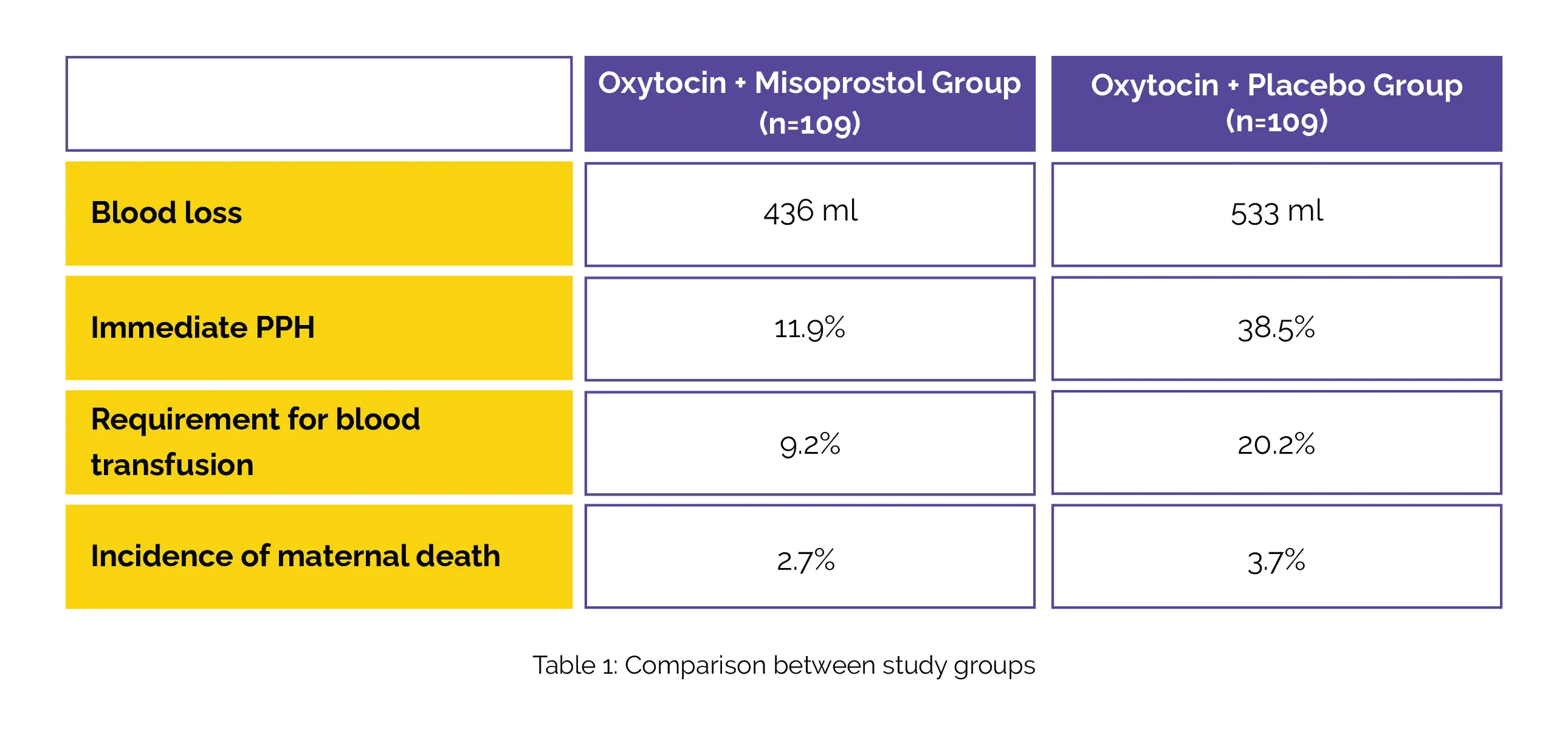Categories
Change Password!
Reset Password!


A randomized comparative clinical trial sought to evaluate the tolerability and efficacy of the combined use of Misoprostol and Oxytocin in the prophylaxis of immediate postpartum hemorrhage (PPH).
Using the combination of Misoprostol and Oxytocin in the third stage of labor significantly reduces postpartum blood loss, the incidence of uterine atony-related postpartum hemorrhage, and the requirement for blood transfusions.
A randomized comparative clinical trial sought to evaluate the tolerability and efficacy of the combined use of Misoprostol and Oxytocin in the prophylaxis of immediate postpartum hemorrhage (PPH).
This study focused on parturients who presented for childbirth at the department. More specifically, the study cohort comprised parturients with a heightened risk of uterine atony, undergoing full-term pregnancies and delivering vaginally at the department during the study period.
Subjects were randomized into 2 groups. The first group was administered Oxytocin and a placebo, while the other group was given Oxytocin and Misoprostol. Assessment of major endpoints, including blood loss, the occurrence of immediate PPH, any adverse effects, and the requirement for blood transfusion was done.
Upon analyzing the data, it was observed that patients who received Oxytocin + Misoprostol exhibited substantially reduced blood loss and a markedly lower occurrence of immediate PPH compared to those who received Oxytocin + Placebo. The requirement for blood transfusion was also notably lower in the Oxytocin + Misoprostol group. Nevertheless, the incidence of maternal death was similar between both groups, as shown in Table 1:

Adverse effects were primarily noted in the Oxytocin + Misoprostol group, encompassing vomiting (12.5%), fever (22.9%), and chills (58.3%).
Providing 600µg of Misoprostol sublingually alongside the standard 10 IU Oxytocin during childbirth markedly decreases the occurrence of PPH resulting from uterine atony. This combined approach shows encouraging effectiveness in averting PPH, but vigilant monitoring for potential adverse effects is crucial.
Journal of Gynecology & Reproductive Medicine
Prevention of Immediate Postpartum Hemorrhage by The Combination of Oxytocin And Misoprostol at The Gynaecology-Obstetrics Department of The Ignace Deen National Hospital of Conakry University Hospital
Abdourahamane DIALLO et al.
Comments (0)